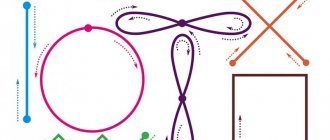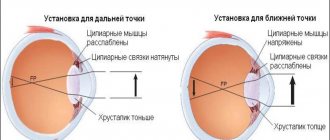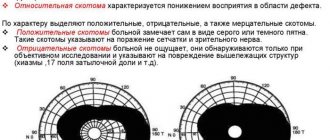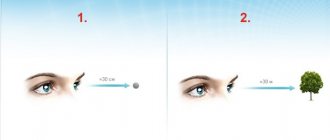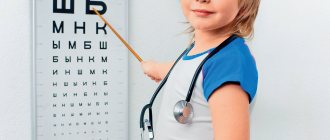Poor eyesight is not a hindrance to sports. Active activities can improve health, make the body stronger, more resilient, but most importantly, a person has the opportunity to feel in society, and in some cases, improve his health.
It is important to correctly identify suitable sports for low vision. The best person to understand this issue is the attending physician, who knows more about the patient than himself and is ready to assess the risks and make recommendations regarding future activities.
Is it possible to play sports if your eyesight is poor?
This question will be answered by doctors and trainers, who should pay special attention to people with health problems. After assessing the condition of the future athlete, you can decide how sport affects vision in this case.
With the right choice of active exercises:
- Will help improve health;
- They will increase the level of endurance of the body, which is always valuable;
- Strengthen joints and bones, as well as muscle tissue;
- They will develop the will to win, which is often necessary to fight the disease;
- They will give you a good mood and provide a boost of energy;
- In some cases, it will allow you to restore, albeit partially, your vision.
Even if vision cannot be completely restored during sports activities, you should still not give up exercising. They help make the body more resilient and a person bolder.
What exercises should you avoid?
If you have minor vision problems, you can go to the gym. It is better to use the help of a coach who will draw up a program and monitor you. If you decide to study without outside help, take the time to draw up a lesson plan. There are a number of exercises that experts do not recommend performing for people who have eye problems:
- deadlift is too much stress on the body;
- Bench presses on an inclined bench (upside down) - pressure constantly increases, which is a common cause of the development of glaucoma;
- squats and using a leg press machine - increased pressure;
- barbell thrust, especially in an inclined position - a large load and a negative angle of inclination.
They can be performed maximum once a week, or better yet, avoid them completely.
Why exercise if you have poor vision?
Does sport affect vision? This influence is not always what a person expects. However, there are positive aspects for the body:
- Strengthening blood vessels;
- Activation of blood circulation and lymph flow;
- Providing the ability to relax various muscle groups, which is especially important for myopia (myopia).
Some sports use not only the muscles of the back, arms, legs, but also the eyes. This allows you to train the tissues, as well as ensure the flow of oxygen to them, eliminating stagnant processes. However, do not forget that various eye diseases require a personal approach.
Not all of them can be treated in the same way, and therefore sports should be selected that will not require excessive effort and provide increased stress. That is why, to eliminate the risk, it is important to find out from your doctor which sport improves vision and is possible in a particular case.
Dangers of strength training
Most often, vision deteriorates when the muscles of the lens of the eye malfunction.
Small problems, if you do not consult an ophthalmologist in time, can develop into nearsightedness (myopia), farsightedness (hypermetropia) or astigmatism. It is important to know the peculiarities of the course of these diseases, because in certain cases it is impossible to stop the loss of vision. The most common disease is myopia.
Often, even healthy people experience temporary loss of vision due to lifting too much weight. It is much more difficult for myopic people, because overloads affect weak organs. Excessive strain can significantly worsen already poor vision. If blood regularly flows in and out of the eyeballs, this leads to serious disruption of the muscles of the lens of the eye.
What loads will be harmful to vision?
In most cases, sport improves vision, but this is not always the case. If the disease progresses, it is important:
- Reduce stress levels. This is especially important when a person has damaged retina. Increased power loads can aggravate the situation.
- Eliminate overly dynamic activities from the training program.
- You should either completely exclude or approach with caution activities such as boxing and wrestling, sports dancing and weightlifting, springboard buckles and cycling. You should not choose equestrian sport, which requires extreme concentration and precise vision, especially in matters of overcoming obstacles. Alpine skiing is often included in the list of prohibited activities.
- Exclude from training excessively sudden movements, as well as overcoming obstacles that a person with poor eyesight simply may not notice.
You should forget about dangerous sports that can cause injury to a person.
The benefits and harms of sports for people with poor vision
It has long been proven that people who have poor vision need physical activity.
You should not limit yourself only to therapeutic exercises and exercise therapy, which gives only a minimum of results and, most often, does not bring any pleasure. After all, many other sports activities are not only useful, but also recommended in order to increase your percentage of vision and raise the overall tone of the body. Moderate sports will strengthen the blood vessels of the eyes and nourish them with blood, which is very beneficial for vision. A low degree of activity will impair the supply of necessary fluid to the eyes. But it is worth remembering that not all sports are suitable for myopic people. Swimming and running are considered the best when the heart rate does not exceed the norm and quickly returns to its normal state. If you do jumping or exercises on apparatus, the pulse will become more rapid, which can lead to complex eye diseases, including ischemia. Therefore, such drastic exercises are unacceptable for people suffering from myopia.
If a person’s myopia is at the first stage and is not progressive, then it will be very useful to play volleyball, tennis, and basketball. These types of games allow you to train your eyesight, constantly work with it, switch to different distances and increase the tone of the eye muscles. Thanks to this, vision becomes more active, its clarity and sharpness increase. This is an excellent prevention of various pathologies that can arise as a result of untreated myopia or farsightedness.
If you have a serious degree of farsightedness, you should eliminate jumping of varying intensity from your activities. In addition to physical sports, it is advisable to also engage in therapeutic exercises for the eyes, which are aimed at developing weakened eye muscles. Sports such as football, weightlifting, and various forms of wrestling are prohibited. But mainly this applies to severe eye diseases, when vision is in a particularly serious pathological condition and can be damaged even more from careless movements and severe overexertion. But at the same time, you should not avoid swimming, leisurely running and even shooting, where the eyes will be moderately strained.
Hiking is very useful, where you can explore others, the surrounding area, and observe animals. This will significantly improve vision and enrich the eye muscles with oxygen. It is useful to sometimes massage the neck so that blood circulation in the head area improves and increases. Those who have extremely poor vision should strictly follow the contraindications that exist for the visually impaired. Then you can preserve your remaining vision and engage only in sports that will be beneficial and will not be dangerous to your health. It is necessary to eliminate all sports where you need to move sharply, move quickly, carry weights or perform any strength exercises. Where there is a danger of falling and body shakes.
What sports are recommended for poor vision?
Doctors do not at all deny the patient the opportunity to use his time to engage in his favorite sport, but one should not be overly zealous in this field.
However, there are a number of activities that can be beneficial for the body, and often even correct vision, albeit partially, but still improve sharpness.
Among the recommended sports, the following should be noted:
- Tennis and badminton are sports activities that activate the visual analyzers.
- Swimming helps activate metabolic processes and normalize blood circulation.
- Yoga, Pilates and aerobics are simple, and often even static, exercises that allow you to relieve muscle tension, saturate your eyes with oxygen, and tune in internally to recovery.
- Oriental dances - smooth movements bring pleasure, do not imply a high degree of intensity, and therefore do not pose a threat to humans.
The possibility or prohibition of using training to improve vision is a question for the attending doctor, who will take into account the characteristics of the human body, and therefore the risks associated with training.
Structure and function of the organs of vision
Vision is a complex biological process that allows people to perceive the world around them. This function is performed by the visual analyzer, the basis of which is the eye. The eyeball has fibrous, vascular and retinal membranes:
- In the posterior part, the outer fibrous membrane is represented by the sclera, in the anterior part it passes into the cornea.
- The choroid is located under the sclera. In the front part is the iris, which contains the pupil.
- The retina consists of outer and inner layers: the first contains the pigment, the second contains light-sensitive elements.
It is important to study in detail the work of the eyeball.
It is surrounded by muscles that control its position and can constrict or dilate the pupil. Thanks to them, human vision can focus and we can clearly see even objects at a distance. Some people have minor impairments that make it difficult for them to see distant elements. It is enough to regularly do special exercises and spend more time in the fresh air.
Strength training is not only not prohibited for them, but is also recommended. If a person has nearsightedness, farsightedness or astigmatism, the visual organs work poorly, and excessive load will worsen the situation.
How to combine sports and glasses
This is a device that provides visual acuity in the absence of it under standard conditions. However, glasses can significantly interfere with a person during sports.
Since glasses are a rather fragile, but expensive design, it is not recommended to use them for sports activities.
Important! You can use contact lenses to improve your vision. They help you feel comfortable and avoid financial losses.
To choose the appropriate type of lenses, you can consult your doctor. He will not only select comfortable products, but also give recommendations on their correct use, which will prevent infection from getting into the eyes.
How do force loads affect the eyes and vision?
When performing physical exercises that involve lifting weights, you need to be aware that not only blood pressure increases, but also eye pressure.
A person predisposed to developing eye pathologies may develop glaucoma.
Glaucoma is a disorder of the flow of fluid inside the eyeball. Small vascular channels become clogged, which leads to a jump in eye pressure. The longer and more persistently you ignore these violations, the more serious consequences will await you in the future. The fluid will accumulate more and more in the canals, the pressure on the optic nerve and nerve fibers will increase, which will lead to their gradual death. Under these conditions, the person will begin to lose vision.
At the initial stage, glaucoma is almost impossible to notice. Only an ophthalmologist can detect symptoms. So if you go to the gym often and work out, get checked by a doctor every six months. This will not only avoid problems, but also get timely help.
Pool training for myopia: is it possible or not?
This is one of the recommended sports that can be used by those who find it difficult to imagine life without active training. Doctors do not discourage such activities, but it should be noted that they can only be used for mild to moderate disease (up to 6 diopters).
Some ophthalmologists recommend using exercises to restore vision. Water has a calming effect on the entire body, including the eye muscles. However, you should not devote all your time to training and limit yourself to only light exercises, maximum – moderate ones.
To determine the extent of what is permitted, you should consider your heart rate - it should not exceed 140 beats per minute.
It is no longer recommended to use swimming lessons to improve health if vision is reduced - below 6 diopters. Otherwise, there is a risk of retinal detachment, which can lead to blindness. But with weak and moderate degrees, you can achieve improved vision.
Children and sports
Can people with poor eyesight go to boxing? Doctors strongly discourage boxing, weightlifting and other martial arts for such children. And often parents have a question: what kind of sport can a child with poor eyesight engage in? The doctors answer is any, where there are no hard contacts, blows, or sudden movements. But the child must constantly visit an ophthalmologist.
If a child really wants to take up boxing or similar disciplines, but he is nearsighted, he has some chance. It is necessary that the dynamics of the disease be negative. If her progress per year is a maximum of 0.5 units, the child is strictly recommended for martial arts.
And you can practice martial arts with poor eyesight if the annual dynamics are stable.
Is it possible to devote time to strength training if you have poor vision?
Strengthening your arms, abs, and performing fairly serious exercises is not always allowed with poor eyesight. Ophthalmologists will advise those who have too low vision or are at risk of retinal detachment to change their occupation, which increases many times over and becomes quite probable.
However, you should not give up your favorite sport. If vision problems cannot be called serious or critical, then using sports is quite possible. But here you will need to comply with the doctor’s requirements and the services of a competent trainer.
With a low degree of myopia, the load will not harm the eyes, but you should not be overzealous. Otherwise, you may get a deterioration rather than an improvement.
Engaging in weightlifting with vision loss of minus 4 diopters will be strictly prohibited. Martial arts, which increase the risk of serious injuries, including to the visual organs, during training or in competitions, are also prohibited.
Does glaucoma progress when exercising to gain muscle mass?
It is impossible to control the course of glaucoma when exercising to gain muscle mass. In addition, doctors generally do not advise doing strength training. But much depends on the stage of development of the disease. If it is at an early stage, a person can play sports, even certain strength exercises. If glaucoma develops and there is a possibility of vision deterioration, you will have to stop lifting weights. To avoid problems, switch to light workouts that can keep you in shape.
Attention! Even if you notice problems with your vision, do not stop doing physical activity.
They often help reduce intraocular pressure. You just need to make a proper training plan and adhere to the following tips:
- do not lift objects exceeding 7 kilograms;
- do only simple training, excluding strength training;
- draw up a schedule, distribute the total load.
Myopia, farsightedness, astigmatism and glaucoma have different effects on the body. If with the first three, under the guidance of a competent trainer and constant monitoring by an ophthalmologist, you can do strength training, then with glaucoma it is strictly prohibited!


